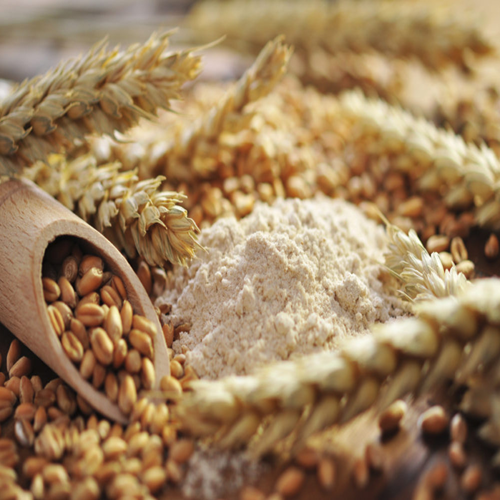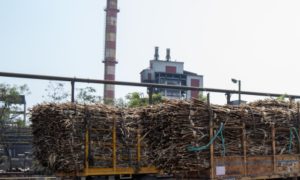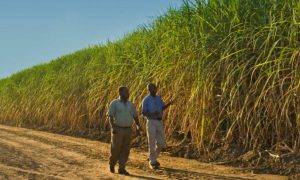Remaking wheat as ingredient vs. commodity

Farm Strategy is transforming wheat production by aligning farmers with bakers’ needs for specific flour characteristics. Founded by Andrew Hoelscher, the company connects growers with end-users, improving wheat quality through direct communication and tailored agronomy. Farm Strategy integrates genetics, testing, and market feedback to optimize wheat traits like dough strength. By addressing the gap between farmers and bakers, the company aims to enhance supply chain transparency, boost farmer profits, and create high-value products for the baking industry.
KANSAS CITY, MISSOURI, US — What if farmers in the southern Plains could grow wheat that could be milled into flour with specific dough strength and other characteristics sought by a baker? What if incentive packages could unite countryside origins with millers and bakers in a controlled supply chain that delivers quality-based wheat and changes the outcome of bread and other grain-based foods?
These scenarios are currently underway in commercial scale wheat and flour sales. Farm Strategy, a seven-year-old company based in Kansas, is working to align the production practices of the US wheat producer with the end-use needs of bakers and other food manufacturers. The company has an extensive domestic shipment network, has made forays into international supply chains, recently added a genetics component to the business and has begun to scratch the surface of an agronomy component.
Farm Strategy’s roots are on a family farm in Ellsworth, Kansas, US. Andrew Hoelscher, a farmer with more than 20 years of experience and an agricultural economics graduate of Kansas State University, saw an opening to increase profits for grain growers by connecting them with end users who bake bread and other foods with wheat flour. The concept was born of the disconnect between what flour qualities bakers wanted and the distorted, delayed, or disconnected market signals received by farmers seeking to maximize profits for their crop.
“My job as a farmer, properly incentivized by the market, is to produce the most pounds of wheat possible regardless of the consequence to the person downstream,” Hoelscher said. “Some people say we need protein premiums, but those are lagging indicators. Take this year’s crop. Nobody offered a protein premium this spring, so a farmer was growing, fertilizing and projecting on yield. By the time a protein market is established for 2024 — a combination of winter wheat and spring wheat established on the new crop between July and September — the farmer had to determine his fertility package six to eight months before anybody ever gave a true market signal on just protein alone.”
At that point in the wheat marketing year, growers already have the crop in the bin, protein premiums are known but can fluctuate. Premiums are correlated, but typically aren’t the best market indicator because bakers seek specific flour characteristics, such as dough strength, which can vary widely within a single protein level, Hoelscher said.
“A 13% protein wheat is the same as any other 13% until a miller figures out he likes that and goes to buy more of it from a different place in the country,” he said. “The difference is you could get a very high or a very low dough strength, all within 13% protein wheat stored at the exact same grain facility. But I can go buy a 10.5%-protein wheat that’ll function better for the baker than a 14%.”
Farm Strategy’s model involves discussing desired flour characteristics directly with the baker or miller, countryside testing via third-party laboratories, segregation of wheat, engagement with the flour miller and shipping directly into specialty markets.
“The baking industry is starting to get this pressure to come down and know their grower,” Hoelscher said. “Whether it’s regenerative agriculture, clean labeling, a marketing decision they’re making; any of those targets are essentially saying ‘I want more transparency in my supply chain’.”
That can be a difficult ask in a commodity market that thrives on the upstream seller and downstream user being ignorant of the business model. Traditionally, a commercial elevator company seeks to incentivize farmer sales through discount scales or basis and conceal inventory details from the buyer.
“The old market adage is the miller tells the baker ‘Let me know me what spec you want, don’t tell me what wheat to buy’,” Hoelscher said. “A mill wants the grain arbitrage to mix and match grain as they see fit within their mill and that’s good; that’s a needed operation. But with the technology movement underway in agriculture, along with the consumer trends of knowing ingredients, clean labels and the like, plus this California proposition where they just outlawed some ingredients, flour is going to have to do more lifting. But the engagement in the countryside is strictly around commodity.”
To address that disparity, Farm Strategy has worked in partnership with growers to increase the management component of farming. Crop output for many decades was defined through genetics (the variety seeded) by environment (location and weather) by management (farmer choices such as inputs). Farm Strategy makes the case that the ‘G by E by M’ formula would better serve the wheat value chain expressed as ‘(G by M) by (E by M)’, i.e. management becoming the dominant factor in conjunction with swift advances in agriculture technology.
“As an example, say a farmer out in western Kansas adds late-season fertilizer based on weather, but then heavy rains come and makes a 10%-protein crop,” Hoelscher said. “The farmer’s really happy because he produced bushels, but he’s under-fertilized and reduced efficiency. If he’s not making 11%- to 11.5%-protein wheat, he’s left some yield on the table. At that point I can, because of the environment, begin making management decisions.
“All of this is held in isolation to the farmer presently in the market. And the farmer’s only target to get compensated in the market is yield: Pounds that I can drop off at the next guy at the most value I can get. The difference is beginning to think ‘what if I have the incentive from the baker? What if I actually have intelligence on how to produce the most functional wheat for that entity.’ Then I can work it back through the system and now I can start to align my genetics and my management and my response to the environment according to an aligned market signal.”
Existing preferred genetics lists traditionally have identified varieties that tested marginally better than others, Hoelscher said. Farm Strategy’s innovation is to work with private and public groups to identify genetics that are yield competitive to the farmer and resist disease but represent a step change in terms of functionality. The company builds a complete supply chain out of those proprietary genetics. Trials have included super-strong gluten, higher-fiber wheat, step changes in protein content, nutrient density, antioxidants and even a winter durum that could compete with commodity durum, be harvested two months before the northern Plains crop and ship on a southern Plains rail line.
“The quality-based genetics are cleaning up labels, reducing additives, doing what they’re supposed to do from a very high-value supply chain piece,” Hoelscher said. “Now we’re doing it with other classes, such as our winter durum, which has the color, the hardness of traditional durum, and we’re building that supply chain in western Kansas. We’ve had one pilot scale run and we’ll have commercial run on it this year.”
Farm Strategy’s current varietal business includes proprietary varieties for complete grind and blending use with a total identity preservation supply chain. The commercial and pilot phase runs have shown significant additive elimination potential, along with the quality improvement, according to the company.
“We’ve also done percentage-based blends with our proprietary super-strong varieties, in which you include a percentage of ours with your normal wheat blend and we haven’t found the bottom where our varieties don’t improve the quality of the bread, but also reduce additives significantly while helping with bowl cost,” Hoelscher said, noting more varietal components are coming.
Farm Strategy also partnered with an agricultural solutions group to begin to understand how to be predictive and responsive with agronomics. The goal is to improve the rheological quality of the crop by examining and creating micronutrient packages specific to regions through a systems approach.
“When we know what an end user needs, we can work it back into the supply chain so that it’s economical for them to source and we can start doing varietal and agronomic solutions,” Hoelscher said. “We haven’t pushed our product to failure yet, but in pushing it as far as we have presently, I can show a 10% reduction in whatever sustainable metric you want. We can show fertility reductions, we can show water reductions, we can show acreage reduction.”
As a disruptor to long-standing business models and commodity market practices, Farm Strategy’s leadership team understands the inclination toward resistance, Hoelscher said. The key, as he sees it, is to incentivize transparency and show the grower, miller, elevator operator and baker how to look over the whole supply chain and see the possibility of sharing the economics of improving the whole system.
“If I’m a big fish in a small business unit pond, I don’t want my pond bigger because I might not be a big fish,” he said. “The reality is if we look at the economic system between the baker up to the farmer, there is enough margin on the table for everybody to eat. Farm Strategy’s proven it, but we must overcome the models that hinder information and transparency flow. Are people resistant, absolutely. There are people that I am sure do not like this model. But we’re not out to destroy anybody’s business. I was on a call yesterday explaining ‘We are not out to destroy you. We will pay you more because we know the value that can be shared with you, and we hope to bring clarity to the whole system’.”
Source Link : https://www.world-grain.com/articles/20246-remaking-wheat-as-ingredient-vs-commodity













